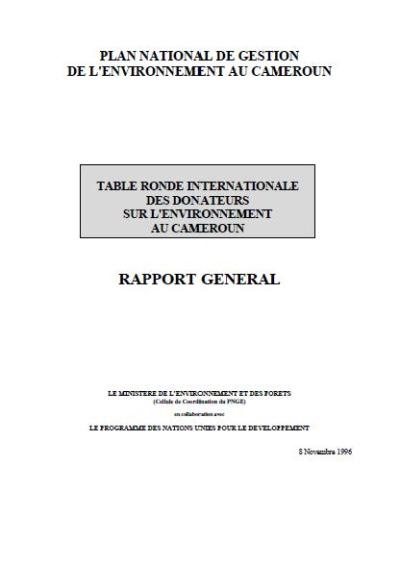Cameroon is located western central Africa, on the coast of the Gulf of Guinea, at a latitude of 3‐ 13°N. Extending from the Gulf of Guinea through west-central Africa to Lake Chad, the Republic of Cameroon contains a large (475,000 square kilometer) and diverse landscape of northern plains, central and western highlands, southern and coastal tropical forests (USDS, 2010). The southern regions of Cameroon are generally humid and equatorial, but the climate becomes semi‐arid in the northern regions. The geography of Cameroon is highly diverse and its topographic features superimpose climatic variations on this north‐south gradient. The low‐lying coastal plain rises rapidly to the inland regions of high plateaus and mountain ranges. The Cameroon mountain range stretches along the country’s northern border with Nigeria, with peaks in excess of 3000m. The semi‐arid north of Cameroon (north of 6°N) is the hottest and driest part of the country, experiencing average temperatures between 25‐27°C in the cooler seasons (SON, DJF), and 27‐30°C in the warmer seasons (MAM, JJA). Temperatures in the southern regions are largely dependent on altitude ranging 20‐25°C, and varying little with season. Annual rainfall is highest in the coastal and mountainous regions of Cameroon. The main wet season lasts between May and November for most of the country, when the West African Monsoon winds blow from the south‐west, bringing moist air from the ocean. The wettest regions receive more than 400mm per month of rainfall, but the semi‐arid northern regions of Cameroon receive less than 100mm per month. The southern plateau region has two shorter rainy seasons, occurring in May to June and October to November.
The current population of approximately 20 million people is predominately urban (58 per cent of Cameroonians live in urban areas; UNFPA, 2010). Cameroon is classified as a lower middle income country (OECD, 2009), as reflected in its GDP per capita of US$1,226 (in 2008; UNDP, 2010a). Much of the country’s economic activity occurs within the services sector (50.4 per cent) followed by industry (9.7 per cent; mostly from mining, and oil and gas) and agriculture (19.8 per cent, particularly timber and coffee) (USDS, 2010). Of the countries in Middle Africa, Cameroon has the most developed legal, economic and political structures (EcoSecurities, 2009).
Latest Publications
See allIn the Cameroon National Plan for Environmental Management climate change adaptation strategies, particularly in the area of coastal zone…


